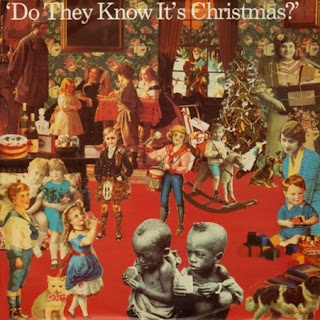Viewing art is like reading a book – nobody does it anymore. In fact, I’d venture to say that the only art the average modern person gets is on the covers of the music he or she listens to.
Sadly, with iTunes and Pandora and Spotify, even that seems to be going away. And that’s why I’ve focused especially on music that might be a little older here in this blog. I just figure that that’s when album cover art was in its heyday and really meant something. And, heck, that still describes a good 50 or 60 years of history anyway. (Oh yeah, that also allows me to relive my youth.)
Methodology
I definitely have my own feelings here, but I did want to start out with a sampling of what everyone thinks as well. Now, that was not too hard, as there are no shortage of best-of lists out there. Here are some of the one I sampled:
- Billboard
- Rolling Stone
- Maxim
- Wired
- Ranker
- ShortList
- NME
- Planet Rock
- Udiscovermusic
- Creative Bloq
I also happen to have a copy of 100 Best Album Covers, by Storm Thorgeson and Aubrey Powell, which also helped a great deal. (BTW, you’ll be seeing a lot more of those two in this blog.)
Now, I mentioned that – with good reason – I’m a little partial to the older stuff. I also had a few other guidelines directing me as well.
One, I wanted to focus on covers that were impactful, even somewhat iconic in nature. In other words, it wasn’t – again – enough that I liked them, but I wanted covers that had some major influence over the long history of album cover art.
As a corollary, even though something might have been super cool, I really wasn’t into it as much if the band was just too obscure. For example, I’m a huge fan of They Might Be Giants – both music and album covers. They’re definitely not, however, everyone’s cup of tea.
Same thing with the Drive-By Truckers, an alt/country/rock/indie group that I’m pretty sure nobody’s ever heard of, but who teamed with a very gifted but even more obscure artist by the name of Wes Freed to create some even cooler covers:
Another thing I was interested in was the degree to which the cover fit into the overall art scene. So, you’ll see a fair number of artists and photographers who made a name for themselves outside of album covers
As a former art history student, I was also very partial to any cover that made a nod in that direction. Here, for example, is an obscure album (Everybody) from an obscure band (Logic) by an obscure artist (Sam Spratt), that is nonetheless a great twist on a somewhat well-known painting (The Wedding at Cana) from a somewhat well-known artist (Paolo Veronese):
Finally, I decided to limit my search just to good old-fashioned rock ‘n roll. So, no jazz, no classical, no country, no folk … I just figured 1) that was a lot easier, and 2) that’s what everybody was interested in anyway. Now, that’s not to say that some of the graphic artists mentioned here didn’t do a little crossover work, and there are plenty of good covers in those genres as well.
Oh, almost forgot … I also limited this to albums only. Though there are some interesting single covers out there (see below), it’s just not the same thing.
Structure
For each cover, I have tried to say something about the band or singer and their style of music, along with something similar about the album itself. This is a very visual blog, so I’ve also included other album covers of theirs I like, as well as pix of the group or artist.
I’ve also tried to relate something similar about the artist behind the cover, including their style, bio, history, and other work. For a blog like this, I think that’s super important – and also something that I think is usually totally neglected.
Heck, if I could identify the model or location, that’ll be in there as well.
And finally – and just to make this a little fun – I’ve included any parodies or homages I could find. Note that these are often amusing, but very much intentionally so. Though I love them (and there are plenty of them out there), I’ve steered clear of any covers that are unintentionally amusing.
Sources
In addition to the best-of lists I mentioned above, I could never have done this blog without the incredible Discogs. If you’ve never been there before, you have to drop everything and go there right now. They have got every detail of every release of every record/CD/song ever released. For me, in particular, that means every credit for every art director, photographer, and graphic artist out there. Truly an amazing site.
As for my parodies, I really relied on Amiright.com, which is a classic in its own right. I heartily recommend wasting a couple of hours there as well.
So, let’s cue up some records, drop the needle, and get this party started …

























































